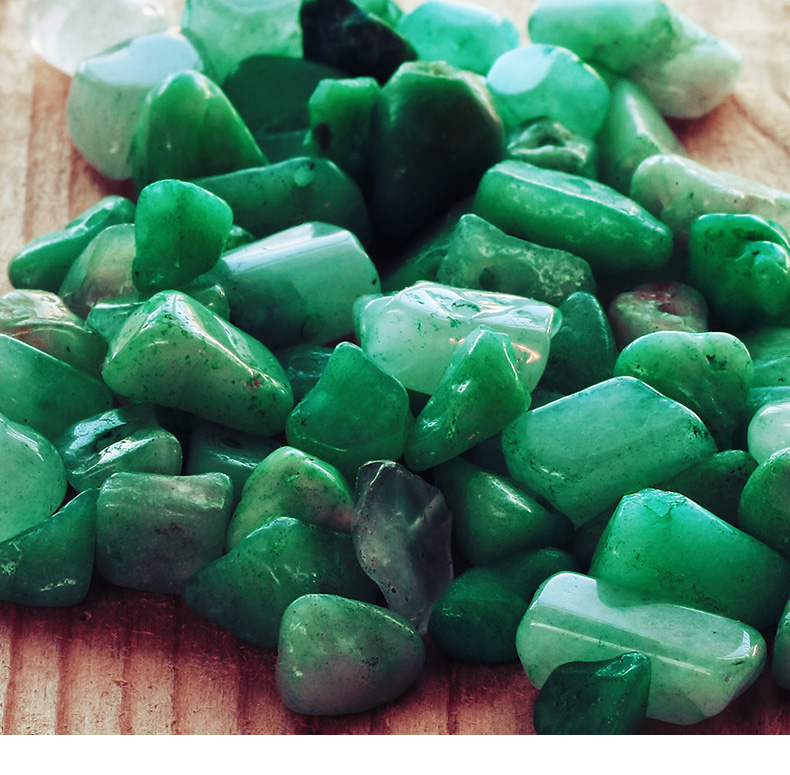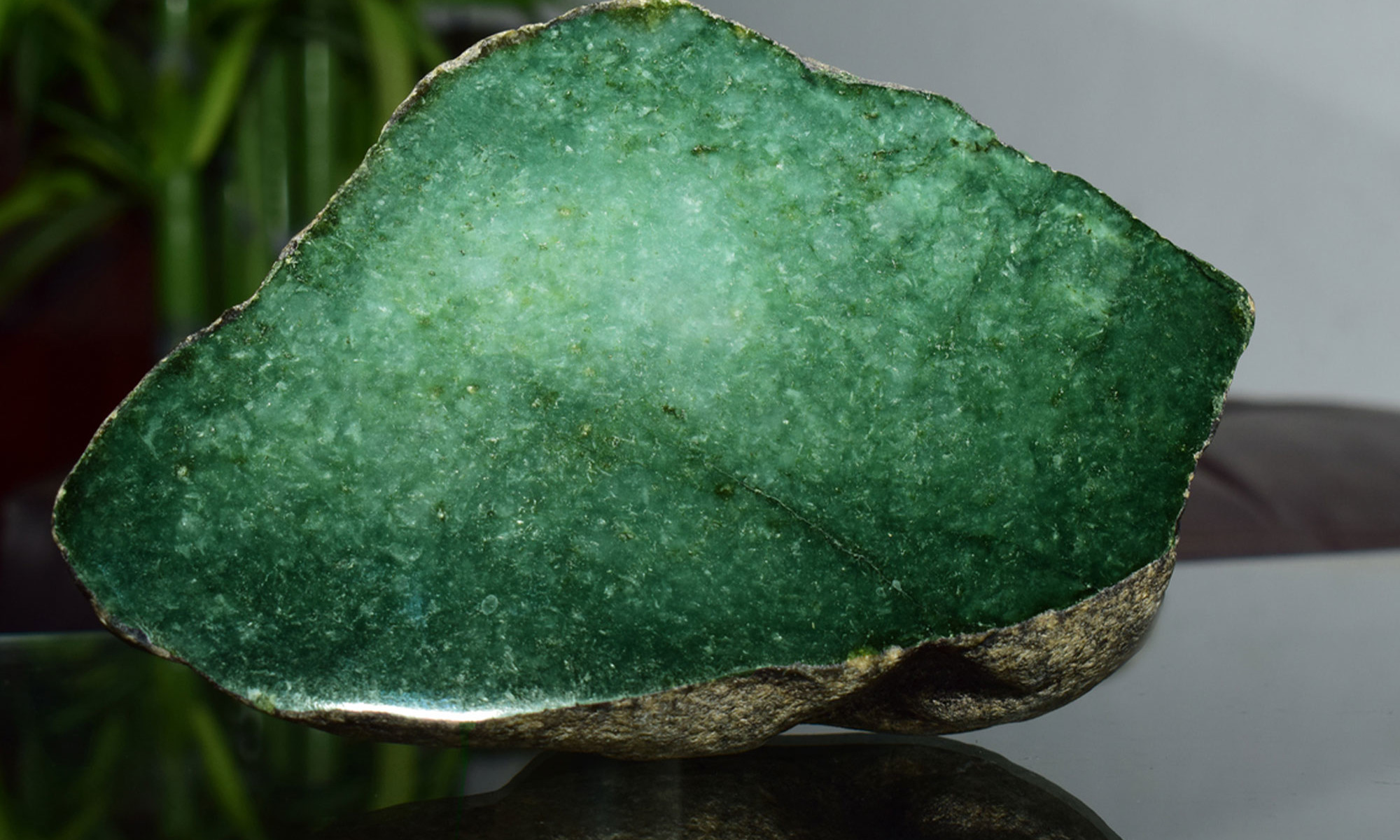For millennia, the allure of jade has captivated civilizations across the globe, weaving itself into the very fabric of human history, art, and spirituality. More than just a beautiful stone, jade is a mineral that is highly prized for its beauty and has been treasured for centuries in many cultures around the world. Its deep connection to ancient traditions and its enduring aesthetic appeal make it a subject of endless fascination.
This comprehensive guide delves into the multifaceted world of jade, exploring its origins, distinct types, profound cultural significance, and the various ways it has been utilized throughout history. From ancient ceremonial objects to modern exquisite jewelry, jade’s journey is as rich and varied as its stunning palette of colors. We’ll be looking into the different types of jade, highlighting their unique qualities and the stories they tell.
Table of Contents
What is Jade? A Gemstone's True Identity
Often perceived as a single, monolithic entity, the term jade is actually composed of two distinct minerals: nephrite and jadeitite. Both minerals have been carved into jewelry, ornaments, small sculptures, and utilitarian objects, sharing a similar appearance and exceptional toughness. This shared characteristic is what led to them both being classified under the umbrella term "jade" for centuries before scientific distinctions were made.
The term jade gets its meaning from the Spanish term “piedra da ijada,” or loin stone. This name originated from the belief among Spanish conquistadors and indigenous peoples in Central America that the stone could cure kidney ailments and other internal pains. This early association highlights jade's long-standing connection with well-being and healing, a theme that resonates across many cultures.
The Two Faces of Jade: Nephrite and Jadeitite
While commonly thought of as a singular stone, the term jade is applied to two different types of rock, nephrite and jadeitite, that are made up of different silicate minerals. Understanding these distinctions is crucial to appreciating the full spectrum of this beloved gemstone.
Nephrite: The Ancient Workhorse
Nephrite is a calcium magnesium silicate mineral, known for its incredible toughness. It can be found in a variety of green colors, ranging from dark forest green to a creamy, spinach-like hue, and even white. Its fibrous, intergrown crystal structure contributes to its exceptional durability, making it ideal for tools and weapons in ancient times, as well as for intricate carvings.
For primitive peoples in the British Isles, its toughness and ability to polish and sharpen made it a highly valued material for axes and other implements. This historical utility underscores nephrite's practical significance long before its aesthetic appeal became paramount. Deposits of nephrite are found in various locations worldwide, including Canada, Russia, China, and New Zealand.
Jadeitite: The Emperor's Choice
Jadeitite, a sodium aluminum silicate, is generally rarer and often considered more precious than nephrite, particularly the vibrant "Imperial Jade." This type of jade is renowned for its vivid, emerald-green color, though it can also appear in lavender, red, yellow, black, and white. Its granular structure allows for a finer polish and often a more translucent appearance, contributing to its higher value.
In this post, we reveal everything you need to know about imperial jade, including its meaning, properties, types, colors, and uses. Imperial jade, specifically, is a jadeitite of exceptional translucency and a rich, pure green hue, often compared to the finest emeralds. The primary source for gem-quality jadeitite is Myanmar (Burma), making it a highly sought-after material in the global market.
A Rich Tapestry of History and Culture
Jade is a beautiful and fascinating stone that has been cherished for thousands of years, holding profound cultural and spiritual significance across numerous civilizations. Its story is deeply intertwined with human development and belief systems.
Jade in Ancient China: The "Stone of Heaven"
The ancient Chinese revered jade as the “stone of heaven,” believing it to embody virtues such as purity, integrity, wisdom, and immortality. The philosopher wrote that jade is like virtue and its brightness represents heaven, its compact texture represents the earth, and its clear sound when struck represents music. This profound philosophical connection elevated jade far beyond a mere decorative item; it was a symbol of status, power, and moral excellence.
For nearly 6,000 years, jade is said to bless whatever it touches, serving mankind across the globe. In China, it was used for ritual objects, burial suits for emperors, musical instruments, and intricate carvings that depicted mythological creatures and symbolic motifs. The traditional jade flat disc with a hole in the middle, known as a "bi," is a prime example of its ceremonial use, symbolizing heaven and eternity.
Global Reach and Primitive Uses of Jade
While China is perhaps the most famous for its jade culture, its influence extends far beyond. Mesoamerican civilizations, particularly the Olmec, Maya, and Aztec, also highly prized jade, using it for masks, ceremonial axes, and offerings to their gods. In New Zealand, the Maori people carved nephrite (known as pounamu) into weapons, tools, and intricate adornments, passing down these treasures through generations as symbols of lineage and spiritual connection.
The global presence of jade artifacts speaks to its universal appeal and utility. Its exceptional toughness made it an invaluable material for early human societies, evolving from practical tools to objects of immense artistic and spiritual value.
Properties and Meanings of the Jade Gemstone
Jade, a gemstone revered for its timeless beauty and cultural significance, has captivated the hearts of civilizations for centuries. Beyond its physical properties, jade is imbued with a rich tapestry of meanings and beliefs.
Spiritually, jade is often associated with harmony, balance, and protection. It is believed to bring good luck, prosperity, and friendship to its wearer. Many cultures consider it a powerful healing stone, capable of purifying the body and mind, and promoting longevity. Its soothing green color is often linked to nature, growth, and renewal, fostering a sense of peace and tranquility.
The toughness of both nephrite and jadeitite is a key property, making them exceptionally durable. This characteristic, combined with their ability to take a high polish, has made them ideal for intricate carvings that can withstand the test of time. Chemically, both are silicate minerals, but their distinct compositions give rise to their unique appearances and properties.
Interestingly, jade is the official gem for the 12th anniversary, symbolizing the enduring strength and beauty of a long-lasting relationship, much like the stone itself.
Iconic Forms and Modern Uses of Jade
Throughout history, jade has been shaped into countless forms, each telling a unique story. From ancient ceremonial pieces to contemporary fashion statements, its versatility is evident.
- Jewelry: Rings, pendants, bracelets, and earrings crafted from jade remain highly popular, often featuring intricate carvings or polished cabochons that highlight the stone's natural beauty.
- Ornaments and Sculptures: Elaborate statues, decorative vases, and intricate figurines continue to be carved from jade, showcasing the incredible skill of master artisans.
- Utilitarian Objects: Historically, jade was used for functional items like bowls, cups, and even pillow rests, believed to impart health benefits.
- Feng Shui and Home Decor: In modern times, jade objects are often used in interior design and Feng Shui practices to promote positive energy, harmony, and prosperity within a space.
- Facial Rollers and Beauty Tools: Jade rollers have gained popularity in the beauty industry, believed to reduce puffiness and improve circulation.
The timeless appeal of jade ensures its continued relevance in both traditional and contemporary contexts, always maintaining its status as a cherished gemstone.
Caring for Your Jade Treasures
To preserve the beauty and integrity of your jade pieces, proper care is essential. Although jade is exceptionally tough, it can still be scratched or chipped by harder materials. Clean your jade jewelry and objects regularly with mild soap and warm water, using a soft brush to gently remove any dirt. Rinse thoroughly and dry with a soft cloth. Avoid harsh chemicals, ultrasonic cleaners, and steam cleaners, as these can damage the stone or its settings.
Store jade items separately from other harder gemstones or metals to prevent scratching. A soft pouch or a lined jewelry box is ideal. With proper care, your jade treasures will retain their luster and beauty for generations, continuing to serve as a testament to this remarkable stone.
The Enduring Legacy of Jade
Jade, either of two tough, compact, typically green gemstones that take a high polish, stands as a testament to nature's artistry and humanity's enduring appreciation for beauty and meaning. From its humble origins as a material for primitive tools to its exalted status as a symbol of virtue and royalty, jade’s journey through history is truly remarkable. It is a stone that not only captivates the eye but also resonates deeply with cultural narratives and spiritual beliefs.
Whether you are a collector, a jewelry enthusiast, or simply someone drawn to the mystique of ancient civilizations, the world of jade offers an unparalleled depth of beauty and historical significance. We hope this exploration has illuminated the unique qualities and profound legacy of this extraordinary gemstone. What aspect of jade fascinates you the most? Share your thoughts and experiences with this timeless stone in the comments below!



Detail Author:
- Name : Dr. Darion McCullough
- Username : mariah.leuschke
- Email : ladarius00@gibson.info
- Birthdate : 1989-09-04
- Address : 419 Hoppe Estates Apt. 217 New Wilfrid, AK 31108
- Phone : +1-713-505-0714
- Company : Hegmann, Windler and Roberts
- Job : Judge
- Bio : Voluptas modi vel qui et. Hic harum ipsa nihil similique et illum harum. At et commodi quis accusantium.
Socials
linkedin:
- url : https://linkedin.com/in/prosacco1990
- username : prosacco1990
- bio : Quos sit excepturi soluta.
- followers : 1980
- following : 2299
twitter:
- url : https://twitter.com/leonor.prosacco
- username : leonor.prosacco
- bio : Excepturi consequatur qui necessitatibus sed consequatur. Eaque quia rerum nostrum doloribus vero sint voluptatem. Enim ut autem et est.
- followers : 4736
- following : 653
facebook:
- url : https://facebook.com/prosaccol
- username : prosaccol
- bio : Voluptas quae vel similique quos aut et velit.
- followers : 4716
- following : 779